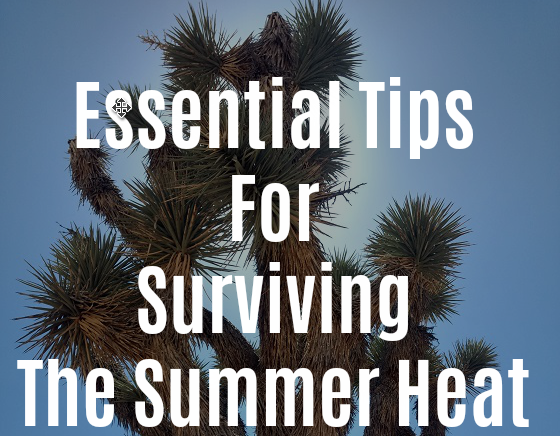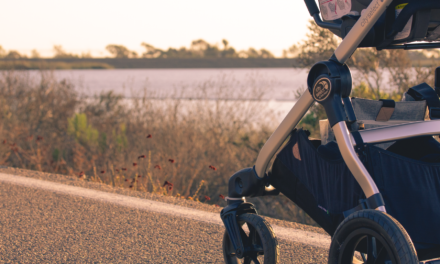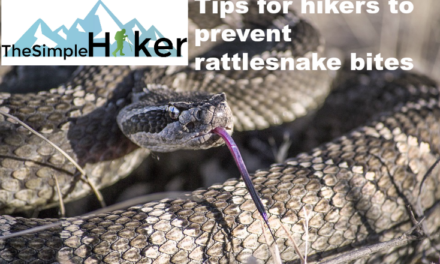If you’re anything like me, you don’t necessarily like hiking in the hot summer heat. Hiking in the heat of summer can put a hiker at risk for heat related illnesses such as heat stroke or rhabdomyolysis. Plus, Hiking in the summer heat can just be plain uncomfortable. Despite the heat, there can still be a strong urge to get out there and get a fix for the hiking urge. If you live in a hot climate during summers but still need a hiking fix, here are some hiking tips to help you survive summer.
Where I live in San Diego, the summer heat can often be too uncomfortable to hike in. Summers can be long hot and humid. To make things worse, summers extend deep into fall for what we call, “Indian Summers” where it’s not uncommon for fall temperatures to reach the 90’s and even in some cases, 100 degrees extending to the coast. All things considered, I still love to hike. Sometimes summer just means I have to be a little more prepared or take the heat into consideration. Heat can kill. So it’s important to think about heat and hiking. It’s also important to do everything you can to prevent heat related illness and rhabdomyolysis.
Simple Tips For Hiking During The Summer Heat
1. Take A Break
I get that it’s fun to get outside and get some fresh air but sometimes, it’s also just a good idea to take a break from hiking during heat waves. What’s the fun in hiking in temperatures that are from 90-110 degrees? Hiking in heat like that can just be uncomfortable and even dangerous. Heat like that can cause heat related illnesses and put a hiker at risk for developing rhabdomyolysis. Let me put it this way, there’s a reason you don’t see much wildlife out during heat spells. Don’t be afraid to put hiking on hold for a bit.
2. Hike During The Coolest Parts Of The Day
Mornings are without a doubt, the coolest part of the day. There are some rare exceptions for this, but as a general rule of thumb, this is the rule. If you’re looking to get out and hike, make a sacrifice and wake up early to enjoy the cooler morning temperatures. Some of the perks of this are enjoying the sunrise, enjoying less crowds, and seeing wildlife in their more active stages before the heat kicks in. Evenings are also a good time to consider hiking when the sun is at a lower angle and more forgiving. However, the daytime temperatures have usually not recovered yet. If you’re up for it, you could also do a night hike.
3. Hike Near A Body Of Water
Here in San Diego temperatures are anywhere from 10-30 degrees warmer inland. The cool pacific ocean generally keeps the coastline forgiving with a nice coastal breeze. Although hikes along the coast may not be as long, have as much elevation gain, or may not be as scenic as some other inland hikes, hiking along the coast can be more pleasant than hiking where the heat is higher.
Oceans aren’t the only bodies of water to consider hiking near. Take into consideration hiking near lakes or rivers or streams as well. They can provide an excellent place to cool off as well as provide great views.
4. Consider Planning A Trip
If it’s within your budget, definitely consider planning a summer time trip to somewhere has more moderate summer time temperatures. There’s a lot of parts of the country that aren’t in the greatest hiking conditions during the colder winter months. Summer is a great time of year to take advantage of those places. Some of these places will include the higher elevations of the Sierra Nevada’s, Colorado Rockies, mountain areas of the Pacific Northwest, and Alaska (I’m sure there are plenty more but those are the ones off the top of my head – please share your favorite areas in the comments section). There are also many National Parks to visit during the summer that offer more hiking opportunities than they do in the winter like Crater Lake National Park, Grand Teton National Park, and Glacier National Park.
5. Revamp Your Hiking Gear
If you are gung ho about hiking during hot weather and it’s a must for you, consider your hiking gear so you can do it safely. Pack light. Wear light and loose clothing that helps to disperse and reflect heat. Consider a hat to help keep the sun and heat off your head and neck. Don’t rule out a cooling towel. Cooling towels can be activated with just a little bit of water and stay cool for several hours. These towels can be put around your neck and help your body to disperse heat.
I recently picked up this cooling towel and I absolutely love it. I’ve been using it on hot days this summer and it’s easily activated with just a little bit of water. It works very simply by just applying water, ringing out the excess, then draping it around your neck. The cooling sensation can help your body to dissipate heat. I highly recommend them.
6. Thinks About Your Nutrition
Hiking during hot weather means your body is going to be losing more water in the form of sweat to help you stay cool. This means you’re going to have to plan on drinking more water than you had anticipated. Taking more water than you think you need on a hike is important. The other important thing is also drinking, not just carrying it with you. Hydration before and after a hike is equally as important. If you’re already starting out a hike dehydrated, you’re setting yourself up to have a bad time. After a hike, make sure you replenish your lost fluids as well.
Hydration isn’t the only important thing. Electrolytes are lost through sweat and need to be replaced. Consider an electrolyte replacement to ensure you’re getting enough sodium and potassium that’s lost during exertion. Also consider fueling your body with the energy it needs in the right ratios of proteins, carbohydrates, and fats. Electrolytes and macronutrients can help fuel your body and help with recovery.
7. Check The Weather
I’m a huge proponent of being aware of what kind of hiking conditions you’re going to be experiencing. This can be quickly accomplished by taking five minutes to look into what the weather is going to be like. Knowing the weather can help you either avoid a specific area altogether, skip a hike, or prepare for the weather conditions you’ll be hiking in.
8. Pick The Right Hike
If you haven’t gathered this from some of my other tips already, pick the right hike. In hot weather, deciding on the right hike can make the difference between a good and a bad time. Seek out trails that are higher in elevation or near the coast where temperatures can be cooler. Look for trails that are in shaded regions – this often means getting up into the mountains where there trees can filter out and minimize exposure to the sun. Trails that are near other bodies of water can be more forgiving.
9. Know The Signs Of Heat Related Illness
These can include:
- General felling of not feeling like yourself.
- Body aches.
- Nausea.
- Vomiting.
- Muscle Cramps.
- Little or no sweating even when you should be in a hot environment.
- Little or no urine output.
- Feeling disoriented or confused.
10. Know When To Quit
If you’re out hiking during the heat and start to feel well, take a break and think about throwing in the towel. Is your Instagram feed or life really that important to finish a hike?
What about you? Do you have any tips or ways for dealing with the heat while hiking? Share them in the comments!





